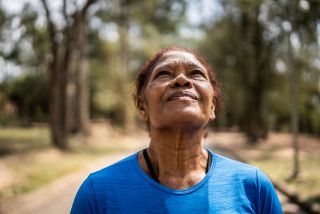Depression
101 Activities to Boost Your Mood
A massive list of ideas to counter depression-related withdrawal.
Posted April 21, 2024 Reviewed by Kaja Perina
Key points
- Depression, low mood, and anhedonia can lead to withdrawal from activities and people.
- Engaging in pleasant activities is associated with better mood and lower depression symptoms.
- If you aren't sure how to get started with behavioral activation, this list of 101 activities can help.

“Behavioral activation” is a therapeutic intervention that involves scheduling or incorporating pleasant activities into daily life. It is effective for treating depression as a stand-alone treatment. However, multiple other psychotherapies (such as Cognitive Behavioral Therapy and Dialectical Behavioral Therapy) also incorporate a focus on increasing pleasant events.
The concept intuitively makes sense–do fun things and you will start to feel a little better. But in practice, it isn’t always easy to engage in pleasant activities when you are already feeling down. Chronic low mood often leads to withdrawal. Withdrawal, in turn, leads to a sense of isolation and even lower mood. Furthermore, anhedonia–a lack of interest or enjoyment from life's experiences–is a common symptom of depression and can make activities that used to be appealing no longer seem so. After a while, it can be hard to remember what types of things used to be fun.
Scheduling pleasant activities (rather than waiting until you spontaneously want to do them) can really help to improve mood–and even reduce anhedonia. Consider planning one per day for the next week, and track your mood before and after each activity. If your mood goes up, add that activity into your regular rotation. A 2023 study of US adults suggests that engaging in a greater variety of pleasant activities is associated with lower levels of depression. So even if you already have a few hobbies that help you feel better, there may be value in broadening and diversifying your favorites. If you can’t think of what to start with, here is a list of 101 ideas:
- Go to a trivia night
- Play bingo
- Paint
- Draw or sketch
- Use a coloring book
- Read a book
- Listen to an audio book
- Listen to a podcast
- Watch a documentary
- Listen to music
- Make a playlist for yourself or someone else
- Sing
- Play an instrument
- Go for a walk
- Visit a public park
- Go to a dog park
- Bake
- Cook a meal
- Make an old family recipe
- Freeze or can food for later
- Bring a meal or baked goods to a neighbor
- Go fishing or hunting
- Dance
- Practice yoga
- Workout at a gym or in your home
- Visit a climbing gym (or go mountain climbing)
- Go on a run
- Take a long bath or shower
- Stretch
- Ride a bicycle
- Rollerblade or skate
- Visit a beach, lake, river, or swimming hole
- Go hiking or camping
- Visit a farmer’s market
- Go to a restaurant or cafe
- Try a new cuisine
- Visit a bakery
- Do a jigsaw puzzle
- Do a crossword, sudoku, or word search
- Plan a trip
- Take a free online course
- Visit the library
- Visit a museum
- Play a video, computer, or phone game
- Go on a picnic
- Get a massage
- Host a clothing swap
- Join a “Buy Nothing” group on Facebook and give something away
- Read or watch old cartoons
- Volunteer for a cause or political campaign that you care about
- Sew, knit, crochet, or embroider
- Learn a new craft
- Meet a friend for coffee or tea
- People watch
- Sit by a fountain, pool, or natural body of water
- Write a letter, card, or postcard
- Journal
- Make a fire in an indoor or outdoor fireplace
- Get a haircut or style your hair
- Paint your nails
- Give yourself a facial
- Visit a salon or spa
- Play ping pong, pool, or darts
- Watch a sunrise or sunset
- Stargaze
- Call a friend or family member
- Eat a popsicle or ice cream cone
- Dress up in an outfit that makes you feel confident
- Write a poem, story, essay, or song
- Go on a date
- Visit a zoo or aquarium
- Play a board game, chess, or checkers
- Play a card game
- Visit a place of worship
- Pray or meditate
- Visit a yard sale, thrift store, or flea market
- Go antiquing
- Go for a drive or take a road trip
- Go to the movies
- Go bowling
- Listen to live music
- Go to an open mic night
- Watch standup comedy
- Go to the theater
- Attend a sporting event
- Watch sports on TV
- Play a sport
- Go kayaking, canoeing, paddle boarding, or tubing
- Start or tend to an herb, vegetable, or flower garden
- Landscape or mow the lawn
- Go foraging for edible plants
- Take care of houseplants
- Volunteer for a community organization
- Wash or detail your car
- Learn or practice a new language
- Go bird watching or set up a bird feeder
- Cut (or buy) and arrange flowers
- Make a photo album
- Print and hang photos in your home
- Go on a walking or bus tour in your own city, town, or region
- Play with a pet
References
Alsayednasser, B., Widnall, E., O'Mahen, H., Wright, K., Warren, F., Ladwa, A., Khazanov, G. K., Byford, S., Kuyken, W., Watkins, E., Ekers, D., Reed, N., Fletcher, E., McMillan, D., Farrand, P., Richards, D., & Dunn, B. D. (2022). How well do Cognitive Behavioural Therapy and Behavioural Activation for depression repair anhedonia? A secondary analysis of the COBRA randomized controlled trial. Behaviour research and therapy, 159, 104185. https://doi.org/10.1016/j.brat.2022.104185
Ong, A. D., & Lee, S. (2023). Variety in pleasant activities is associated with improved mental health: Evidence from two national samples of u.S. Adults. Affective Science. Advance online publication. https://doi.org/10.1007/s42761-023-00225-x
Richards, D. A., Rhodes, S., Ekers, D., McMillan, D., Taylor, R. S., Byford, S., Barrett, B., Finning, K., Ganguli, P., Warren, F., Farrand, P., Gilbody, S., Kuyken, W., O'Mahen, H., Watkins, E., Wright, K., Reed, N., Fletcher, E., Hollon, S. D., Moore, L., … Woodhouse, R. (2017). Cost and Outcome of BehaviouRal Activation (COBRA): a randomised controlled trial of behavioural activation versus cognitive-behavioural therapy for depression. Health technology assessment (Winchester, England), 21(46), 1–366. https://doi.org/10.3310/hta21460


